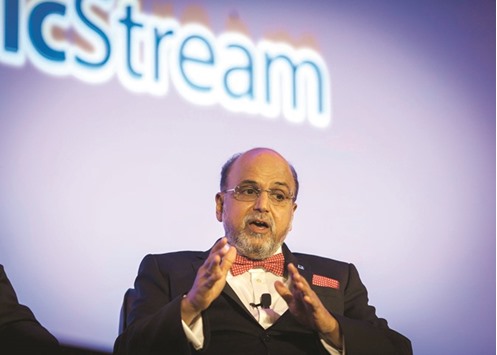Adopting sustainable development in the GRC (governance, risk and compliance) framework is both a challenge and an opportunity, Doha Bank CEO Dr R Seetharaman has said.
He was speaking at the 4th Annual GRC Summit 2016 held recently in Washington, DC, where he participated in the session “Making GRC Simple: A C-Level Discussion.”
He said: “We are in a volatile environment and the growth dynamics are constantly changing. Economic changes, market volatility, technology, and digital security are areas where GRC could find itself challenging to adopt if it doesn’t understand the dynamics in each segment and the linkages between them. It is also an opportunity as the GRC framework becomes more dynamic and wider in Scope. GRC should promote sustainable development.”
Seetharaman said the key trends, which are impacting the banking environment, include macroeconomic developments, financial market developments, technology developments, cyber security incidents, and changes in legislation and regulation, “have a bearing on the GRC framework.
He stressed that global governance “was redefined” after the crisis, and created an impact on corporate governance.
“The failures of Lehman & Madoff have indicated how corporate governance failure can contribute to systemic risks. Risk management, remuneration and incentive systems, board skill’s and independence, and shareholder engagement are the key areas which had been revisited after the global financial crisis,” Seetharaman said.
“The board should review and provide guidance about the alignment of corporate strategy with risk appetite and the internal risk management structure. Steps must be taken to ensure that remuneration is established through an explicit governance process.
“Transparency needs to be improved beyond disclosure. The functions of chief executive officer and chair of the board of directors are separated. Shareholders should be proactive,” he stressed.
Seetharaman said there was a general shift in attention towards financial crime, vanishing tolerance for tax avoidance, and the perceived increasing threat of terrorism from individuals and countries.
“There is an increasing demand for both domestic and global compliance within regulatory standards,” he noted.
Seetharaman said GRC improves the alignment of risk activities to the strategic objectives of the business. Companies, he said, are now being forced to align in order to close gaps and eliminate overlaps, while focusing on the risks that matter and create value.
“GRC framework should be realigned to address challenges arising from changing market dynamics. There is an increased focus on GRC to ensure that how these three functions integrate and work closely to increase their effectiveness,” he said.

Seetharaman: Volatile environment.


